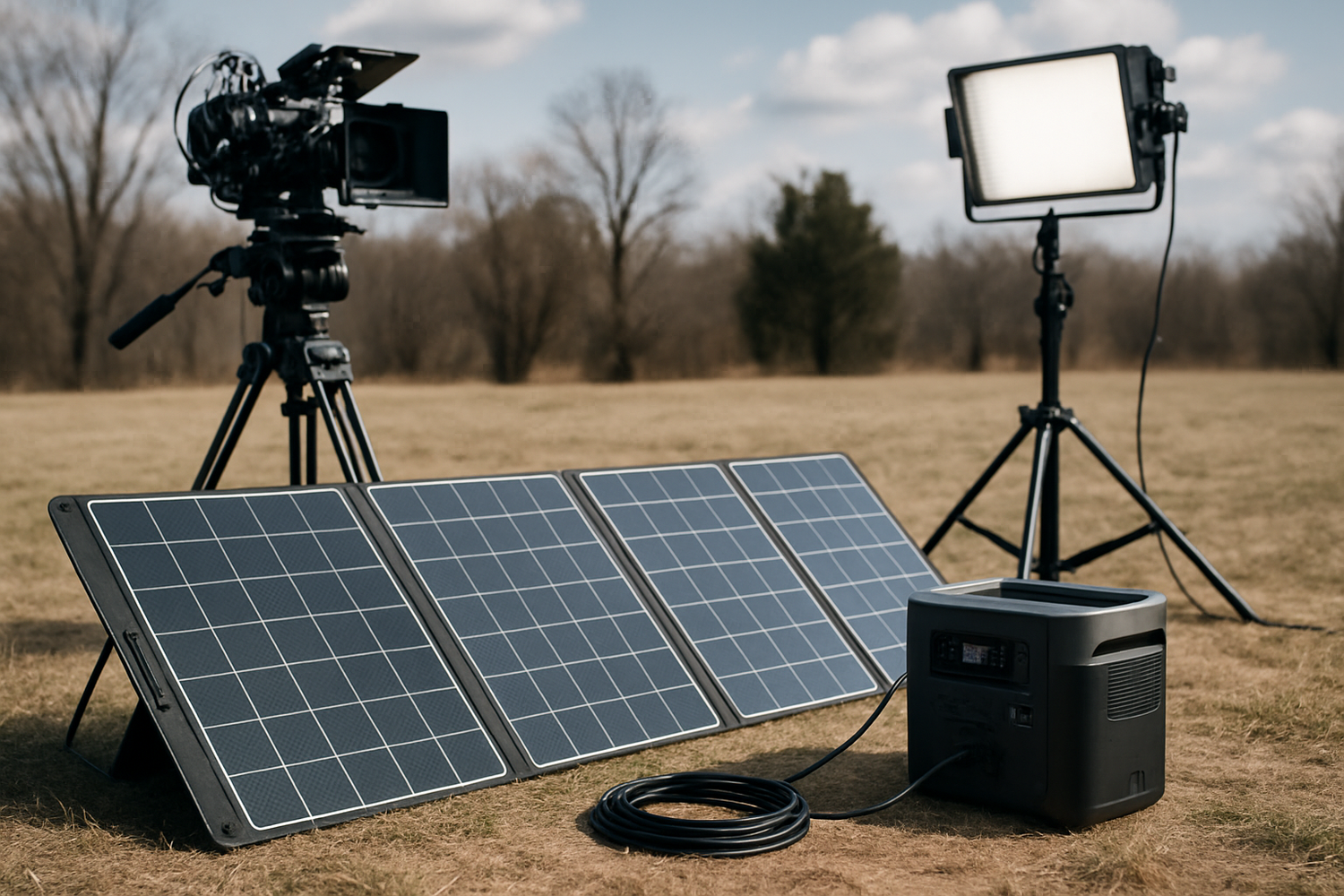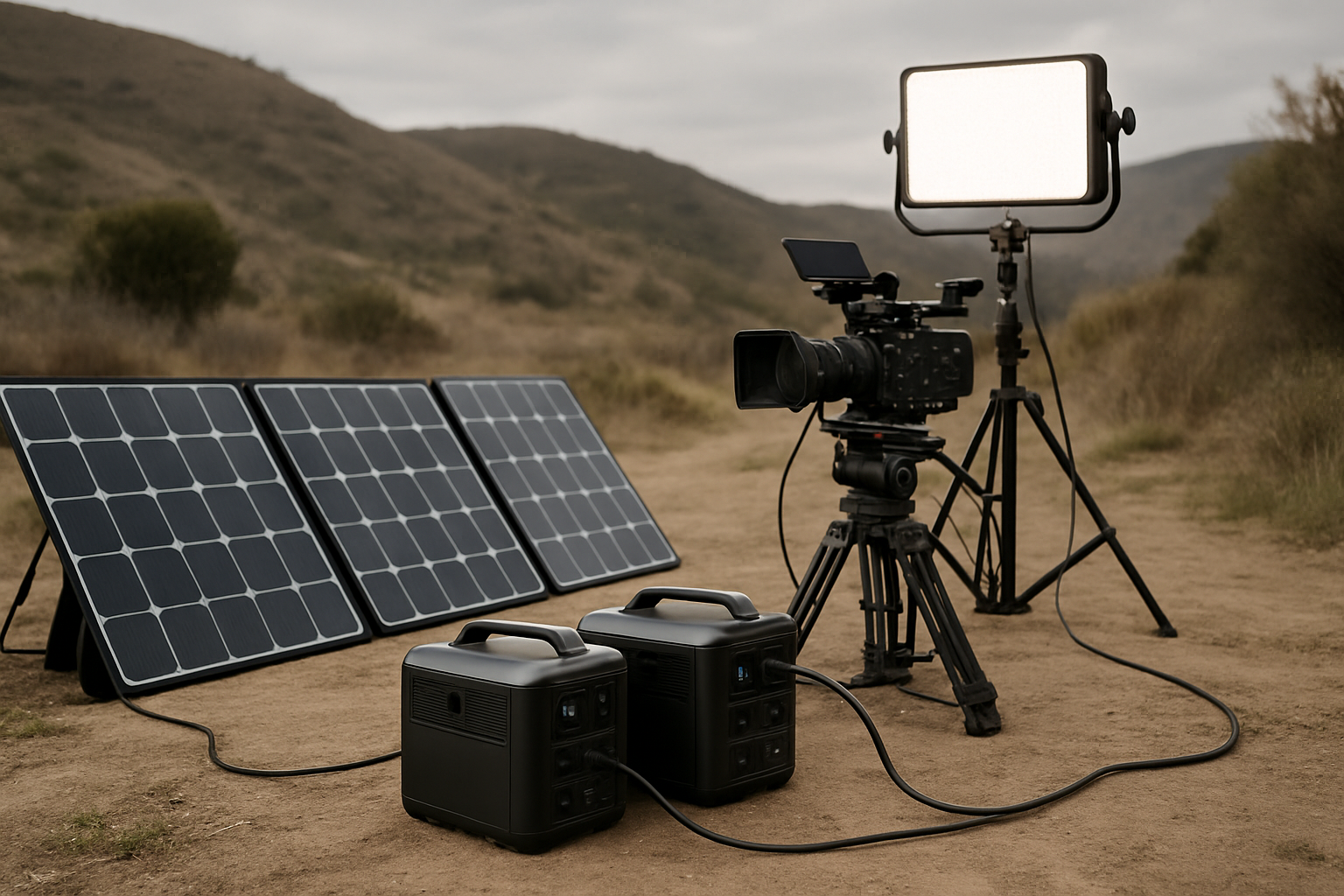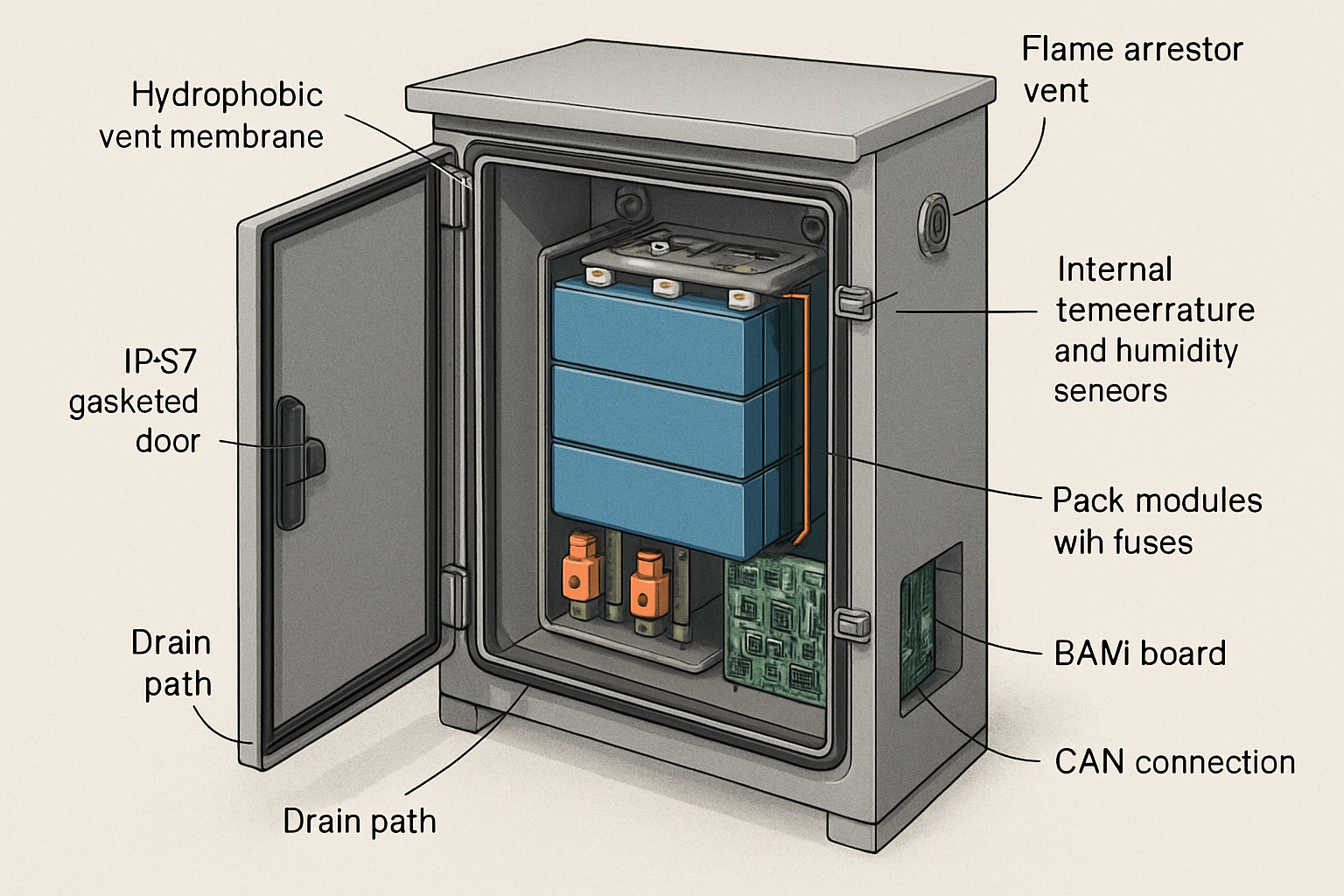The demands of filmmaking and photography in the field are constantly changing. Productions frequently move to remote locations, requiring adaptable and reliable power. As we move through 2025, the industry is witnessing a significant shift towards sustainable, efficient, and secure energy solutions. This evolution is driven by a need for quiet operation, reduced environmental impact, and robust power management for sensitive equipment.
The Evolving Landscape of Field Production Power
The traditional reliance on noisy, emission-heavy generators for on-set power is diminishing. Modern productions seek cleaner, more flexible alternatives. This transformation is not just about environmental responsibility; it also improves operational efficiency and expands creative possibilities in diverse locations.
The Shift Towards Sustainable Energy
Filmmaking and photography sets are increasingly adopting eco-friendly power sources. This move helps reduce carbon footprints and aligns with broader sustainability goals within the entertainment sector. Traditional diesel generators, while portable, produce disruptive noise and harmful fumes, making them less suitable for many contemporary productions .
Clean energy investment has seen a notable increase. According to the IEA World Energy Investment 2023 report, clean energy investment surpassed fossil fuel spending by a ratio of 1.7:1, a significant change from a 1:1 ratio five years prior . Investment in solar power, in particular, has emerged as a prominent area, with over $1 billion per day now spent on solar power .
Portable Power Solutions for Modern Sets
The need for portable, silent, and reliable power is paramount for modern productions. Whether shooting a documentary in the wilderness or a feature film on a remote location, power solutions must be adaptable . These solutions enable filmmakers to operate cameras, lighting, and sound equipment without interference from noisy generators . Portable power untethers filmmakers from fixed power grids, allowing greater freedom in choosing shooting locations and optimizing production efficiency .
Solar Power in Filmmaking and Photography
Solar energy offers a revolutionary approach to keeping cameras rolling and lights shining, especially in off-grid scenarios . It provides a clean, limitless power source, reducing reliance on finite natural resources .
Advancements in Portable Solar Panels
Today's portable solar panels for film production are designed for durability and efficiency. Many models feature monocrystalline silicon cells, lightweight aluminum frames, and tempered glass, making them robust enough for location shooting . Foldable designs allow for easy transport, packing down to the size of a production case . Power output for these systems ranges from compact 300W panels, suitable for small crews, to heavy-duty 2000W arrays capable of powering large lighting rigs .
Integrating Solar with Battery Systems
Solar panels function by converting sunlight into electricity through photovoltaic cells. This energy then charges a battery storage system. An inverter converts the direct current (DC) power from the batteries into the alternating current (AC) needed for most film equipment .
The cost-effectiveness of solar PV continues to improve. The International Renewable Energy Agency (IRENA) Renewable Power Generation Costs in 2024 report states that solar photovoltaics (PV) were, on average, 41% cheaper than the lowest-cost fossil fuel alternatives in 2024 . The global weighted average Levelized Cost of Electricity (LCOE) for utility-scale solar PV stood at $0.043/kWh in 2024 . This data reinforces solar's position as a highly competitive energy source.

Battery Storage for On-Set Efficiency
Battery storage systems are fundamental to modern field production, providing stable power even when solar input is inconsistent. Lithium Iron Phosphate (LiFePO4) batteries are a leading choice for these applications due to their performance and safety features.
The Advantages of LiFePO4 Batteries
LiFePO4 batteries offer significant benefits over other battery chemistries. They are a sub-type of lithium-ion batteries, known for enhanced safety, a longer lifespan, and a wider optimal temperature range .
- Longer Lifespan: LiFePO4 batteries can endure up to 5000 cycles at 80% Depth of Discharge (DoD), translating to years of reliable performance. This is significantly more than typical lead-acid batteries, which may only manage around 500 cycles .
- Improved Safety: These batteries use a non-flammable electrolyte and have intrinsic thermal and chemical stability, making them less prone to overheating or thermal runaway compared to other lithium-ion types. They do not emit toxic fumes or off-gassing .
- Fast Charging: LiFePO4 batteries support high charge rates, allowing for quicker recharging, which is crucial for demanding production schedules .
- Wider Operating Temperature Range: They perform well in a broad temperature range, typically between -20°C and 60°C, making them suitable for diverse filming environments .
- High Energy Density: LiFePO4 batteries offer high energy density, meaning they can store substantial power in a lighter, more portable package. This is a key advantage for mobile setups .
- Low Self-Discharge Rate: They retain their charge for longer periods when not in use, and do not suffer from memory effects, simplifying storage and maintenance .
Scalable Energy Storage Systems
LiFePO4 batteries form the core of robust energy storage systems (ESS). These systems can be scaled to meet various production needs, from small independent shoots requiring a few kilowatt-hours to larger productions needing hundreds of kilowatt-hours for base camps and extensive lighting . Modular battery storage solutions can store and manage power from solar, grid, or backup generators, providing silent, reliable energy for noise-sensitive sets .
The cost of battery energy storage systems (BESS) has seen a dramatic reduction, falling by 93% since 2010, reaching USD 192/kWh in 2024 . This cost reduction makes advanced battery solutions more accessible for field production.
Ensuring On-Set Power Safety
Powering a film set involves inherent risks. Prioritizing safety through robust power management and cybersecurity measures is non-negotiable.
Cybersecurity for Distributed Energy Resources
As distributed energy resources (DERs) like solar and battery systems become more integrated into power grids, the need for stringent cybersecurity measures increases. Each connected device presents a potential entry point for cyber threats . The U.S. Department of Energy (DOE) recognizes this challenge, with national DER capacity expected to quadruple by 2025 .
The DOE has invested significantly in cybersecurity for the energy sector, allocating $45 million for projects developing new tools and technologies to prevent cyberattacks and reduce energy disruptions . Technologies like zero-trust architecture, which assumes a network is potentially compromised and requires protection, are crucial for securing data on distributed edge networks . These advancements help ensure that power systems can communicate securely and protect against external threats .
Best Practices for Power Management
Maintaining a safe set environment requires diligent power management practices. Film sets contain potentially dangerous equipment, including hot lights and temporary cables .
- Tech Scouting: Always scout locations to identify potential hazards, power sources, and emergency escape routes .
- Circuit Management: Separate circuits to prevent overloading and blowing fuses. Know the location of breaker boxes before filming begins .
- Cable Organization: Manage and organize all cables by taping them down to prevent trips and falls, ensuring clear pathways .
- Equipment Handling: Ensure all crew members are properly trained in handling cameras, lights, and rigging to prevent equipment-related injuries .
- Emergency Preparedness: Develop and communicate emergency plans. Basic training in accident prevention and response can reduce harm and facilitate quicker recovery from mishaps .
Shaping the Future of Production
The field of filmmaking and photography is embracing a new era of power. The integration of solar energy and advanced battery storage, particularly LiFePO4 technology, offers silent, reliable, and sustainable power solutions. These innovations not only reduce environmental impact but also enhance operational flexibility and open up new creative avenues for productions in any location. Coupled with a strong emphasis on cybersecurity and on-set safety protocols, the future of field production power is poised for greater efficiency, resilience, and creative freedom. Adopting these reliable and scalable energy solutions helps production teams achieve energy independence and focus on their craft.
Frequently Asked Questions
What are the primary benefits of using solar power for field productions?
Solar power provides a clean, silent, and renewable energy source for film and photography sets. It eliminates the noise and fumes associated with traditional generators, allowing for undisturbed audio recording and operation in sensitive environments. It also reduces carbon emissions and operational costs, especially in remote, off-grid locations .
Why are LiFePO4 batteries preferred for on-set energy storage?
LiFePO4 batteries are favored for their extended lifespan, superior safety features (thermal stability, non-flammable electrolyte), fast charging capabilities, and ability to perform across a wide range of temperatures. Their high energy density also means they are lighter and more portable, which is ideal for mobile production setups .
How does cybersecurity apply to on-set power systems?
As field productions increasingly use distributed energy resources (DERs) like solar and battery systems, these connected devices can become targets for cyber threats. Cybersecurity measures, including technologies like zero-trust architecture, are vital to protect data and ensure the secure and reliable operation of power systems on set, preventing disruptions and safeguarding sensitive equipment .
Can portable solar solutions power all types of film equipment?
Yes, modern portable solar and battery systems can power a wide range of film equipment, from cameras and laptops to LED lights and sound systems. The scalability of these solutions allows for configurations that meet the power demands of both small independent shoots and larger-scale productions .
References
- EERE Success Story— Energy Networking Technology Helps Close Door to Cyber Threats. Office of Energy Efficiency & Renewable Energy. January 26, 2023.
- IEA World Energy Investment 2023. International Energy Agency. May 28, 2023.
- Renewable Power Generation Costs in 2024. International Renewable Energy Agency. June 2025.
- IRENA Reveals: Renewables Have Saved the World $467 Billion in Fossil Fuel Costs. International Renewable Energy Agency. August 19, 2025.
- World Energy Investment 2023. International Energy Agency. May 28, 2023.





Leave a comment
All comments are moderated before being published.
This site is protected by hCaptcha and the hCaptcha Privacy Policy and Terms of Service apply.